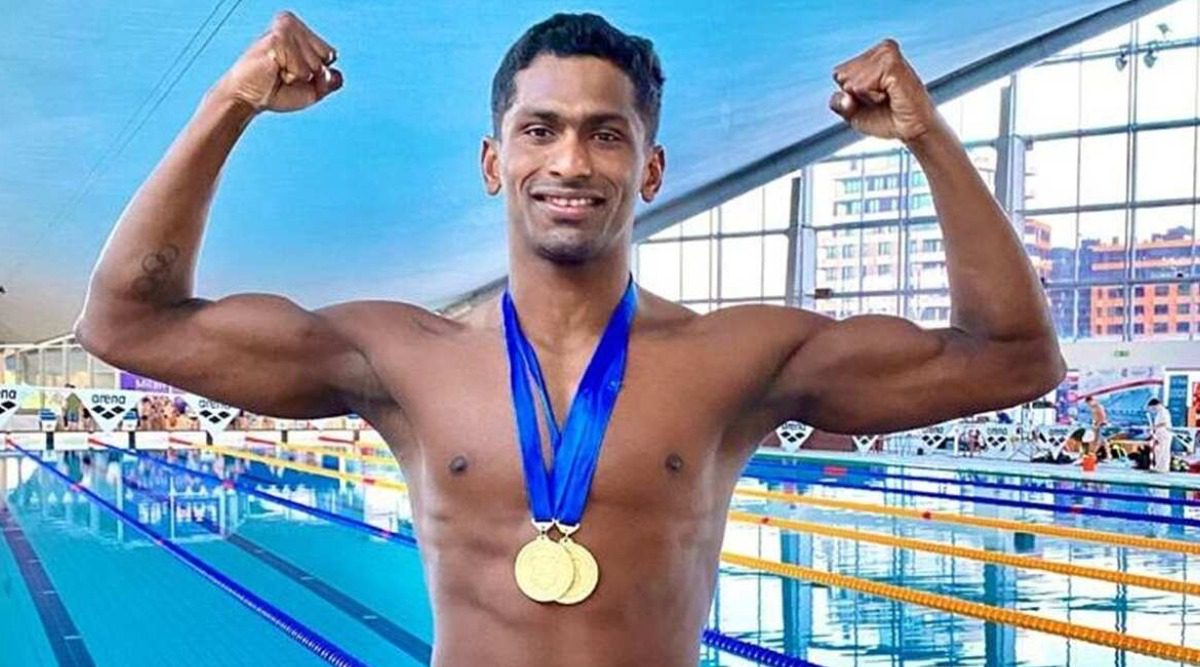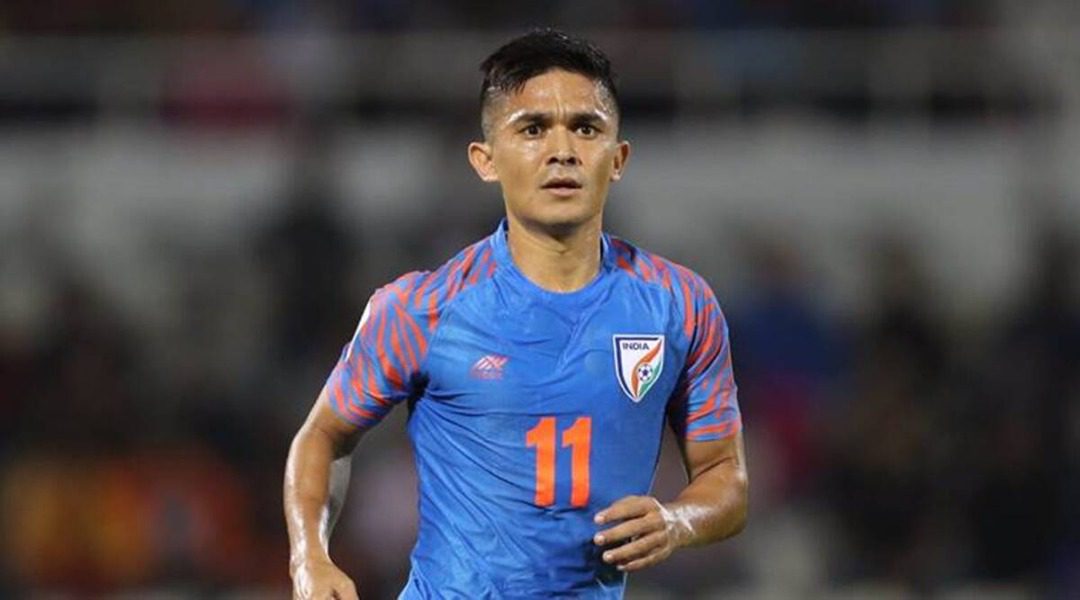The Eternal City of Rome woke up to a bright and sunny morning on June 26, and so did Indian swimmer Sajan Prakash. With palpable excitement, the 27-year-old athlete moved swiftly towards the swimming pool that was waiting for him to create history. Taking his position at Sette Colli Trophy championship in Lane 3, he jumped at the sound of the whistle and in less than two minutes he breached the elusive ‘A’ cut that stands formidably at 1:56:48 minutes. At that very moment, a star was born.
The swimmer from Kerala had created history. He didn’t just clinch gold in the 200m butterfly but he also became the first Indian swimmer to earn a direct Olympic qualification.
I congratulate @swim_sajan for becoming the 1st Indian swimmer to qualify for #Tokyo2020 as he clocks 1:56:38 in men’s 200m butterfly at the Sette Colli Trophy in Rome. It shows the commitment of our athletes towards making India proud. pic.twitter.com/27LMd3OVj4
— Kiren Rijiju (@KirenRijiju) June 26, 2021
With a neck injury and no practice for 8 months in 2020, Tokyo 2020 Olympics was a distant dream for this Indian athlete. But he turned every adversity into an opportunity. A month after his historical win, Prakash is in Tokyo.
Prakash epitomizes the adage, ‘Where there’s a will, there’s a way.”
Difficult childhood
Born in Idukki district of Kerala, Prakash was raised in Tamil Nadu’s Neyveli by his mother VJ Shantymol after his father abandoned the two, a year after his birth. A former athlete, his mother brought up Prakash at Neyveli Lignite township where she was employed on a sports quota.
With an indoor stadium in the township, Prakash started swimming at the age of 3. For the next seven years, his swimming was restricted to summer vacations, but as he turned 10, Prakash started taking the hobby seriously.
Under the mentorship of his coach Sabi Sebastian, Prakash started bringing medals home.
Mother’s unrelenting support
Prakash’s mother has been his biggest supporter and cheerleader on his journey. When a young Prakash moved to Bengaluru for better swimming facilities, his mother made an overnight 380 km journey every weekend from Neyveli in Tamil Nadu with torches in her bag to help bus drivers fix punctures on potholed roads.
In a conversation with Indian Express, she said,
“I had to punch in at the office at 8.30 am sharp the next morning, or I’d lose half a day’s salary. The state transport buses would routinely stop because the roadworks on that route was bad due to tyre punctures. I couldn’t afford for the bus to halt because I couldn’t reach late. I just started carrying three torches and many times got down from the bus myself to fix the puncture.”
Most of her salary went into buying plane tickets for her son to participate in competitions. “Till 2015, he even used second-hand suits,” Shantymol says.
View this post on Instagram
An athlete herself who raced the 100m, 200m sprints at the 1987 World Championship and Asian Juniors, Shantymol understood how important Prakash’s dream was for him.
“Being a sportsperson herself, she understood things better. How to progress in the sport, the hardship every sportsperson faces. If you fail every time, how you would get back. It was good that I had a mother who understood me completely and understood my goal. She pushed me every time I failed,” Prakash told Hindustan Times.
A job that fuelled his passion
Such was his zeal for swimming that he took up a job as a railway clerk in Bengaluru to support his passion. His job entailed standing long hours at the yards and checking every bogey that decamped there. It was between two hours of morning and evening swimming practice that he sandwiched his day job.
It was his good performances at railway meets and national games that convinced his employers to let him off the hook, and concentrate on swimming. He joined the Kerala police in 2018.
The Global Indian journey
Known as India’s Michael Phelps, Prakash shot to fame with the 2015 National Games where he pocketed six gold medals and three silver medals. A year later, the swimmer presented India at Rio Olympics where he got a chance to compete against his idol Michael Phelps in the 200m butterfly event.
“Olympics is a stage for the top athletes in the world. It was a great feeling when I saw him. Because he has done so much for the sport. His achievements are really incredible. I felt really very happy. It was remarkable I got to compete with him in the same event.”
View this post on Instagram
Sajan Prakash was on the world stage once again with the 2018 Asian Games. Despite the tragic floods in his hometown, he managed to qualify for the finals making him the first Indian swimmer to achieve the feat in 32 years in Asiad. By shattering his own national record and finishing fifth in the finals, Prakash humbly announced his arrival to the world.
This feat gave wings to his Olympics 2020 dream, but his happiness was short-lived as the 27-year-old injured his neck and shoulder at the SAF Games in Nepal in December 2019. With only 7 months left for the qualification round, Prakash was in despair.
But Sajan Prakash is not the one to back down in adversity. The 2020 lockdown turned out to be a blessing in disguise for the swimmer as he could recuperate and prepare for Olympics 2020. Despite staying away from the pool for 8 months, he left for Aqua Nation Sports Academy in Dubai for his training. With the competitions at Latvia and Belgrade, Prakash was getting his flair back. But it was in the Eternal City of Rome that Prakash created history. By clocking in 1:56:38 at the 200m butterfly event, Prakash became the first-ever Indian swimmer to earn a direct Olympic qualification by breaching the Olympic Qualifying Time. In less than two minutes, he booked his slot at the Tokyo Olympics 2020.
View this post on Instagram
>
Editor’s Take
There isn’t a prouder moment for a sportsperson than to represent his country at the Olympics. And that’s exactly what Indian swimmer Sajan Prakash is gearing up for. His story of grit, passion and unshakable determination has made him a world-class athlete, and the swimmer is now ready to take on the best in the world at Tokyo Olympics 2020. The Kerala-born swimmer has beaten all odds to reach where he is and is an inspiration for many.
Read a similar story of Tulasi Chaitanya, an ace swimmer loves going against the tide.


